



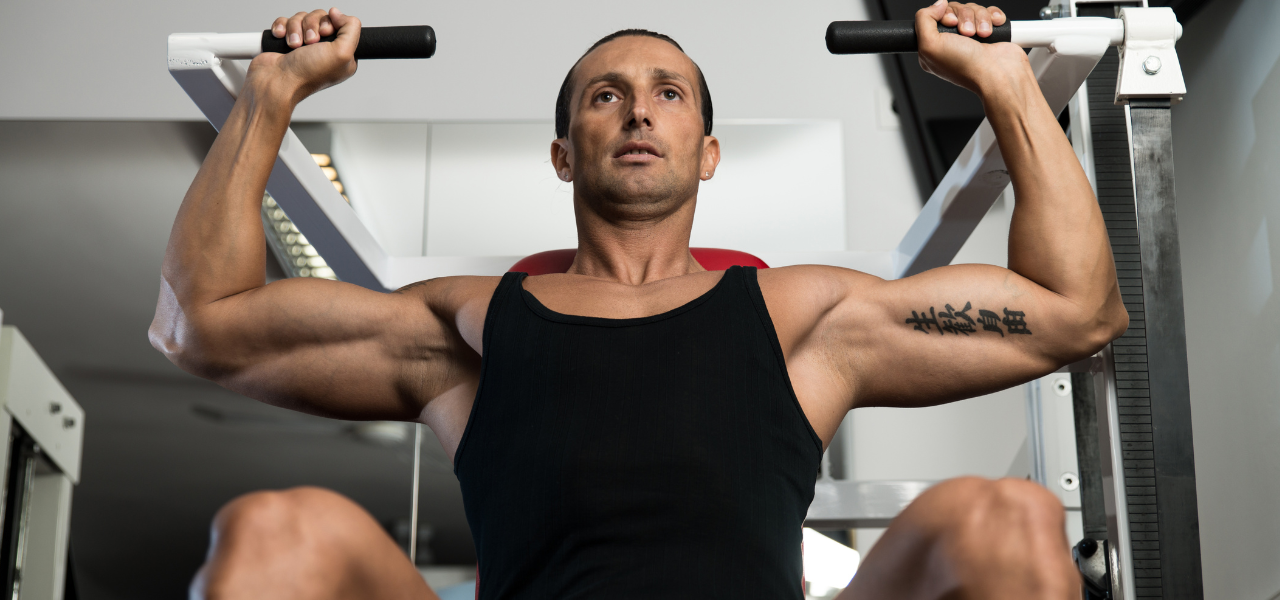
While the biceps and chest often steal the spotlight, the deltoids are key to achieving a powerful, well-rounded physique. This guide explores the best exercises for developing the front delts, debunking myths, and providing actionable training tips. Strap in, because we are going to guide you on how to target and grow this crucial muscle to meet your strength and aesthetics goals for shoulder workouts!
Understanding the Delt Muscles
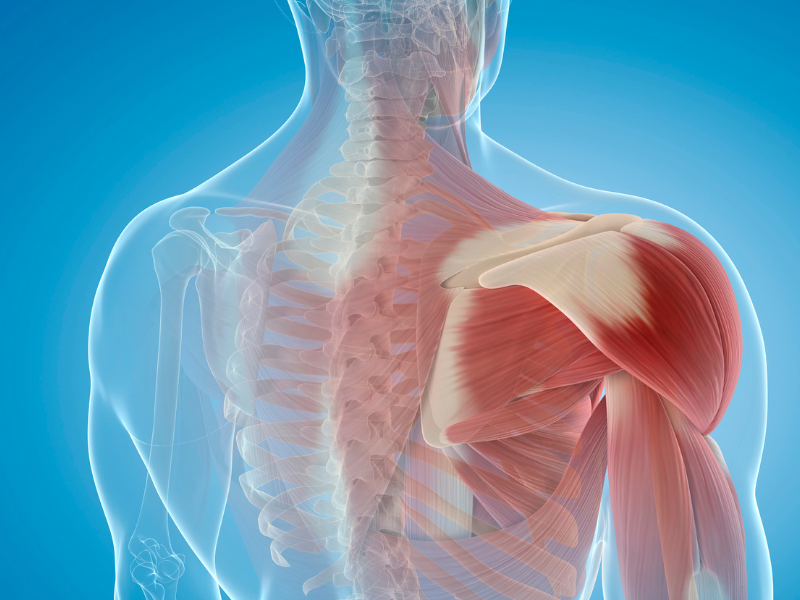
The deltoid muscles power our arm movement in various directions while protecting and stabilising our shoulder joint.The deltoid muscle is made up of three distinct heads: the anterior (front), lateral (side), and posterior (rear) [1]. The anterior deltoid, located at the front of the shoulder, is responsible for shoulder flexion—lifting the arm forward and upward. This movement is essential for daily tasks and sports.
Additionally, it aids in shoulder abduction (moving the arm away from the body) and internal rotation (turning the arm inward) [2]. Understanding the anatomy of the deltoid enables you to select the most effective exercises and training methods to decide how rounded or wide you want your shoulders to be.
You may also like: The Best Rear Delt Exercises for Stronger Shoulders
Importance of Delt Workouts for Shoulder Width
Strong deltoids are a cornerstone of an athletic physique. They help create the “V-taper” look—broad shoulders that taper to a narrower waist—contributing to a more proportionate upper body. Beyond aesthetics, well-developed deltoids improve shoulder stability, reducing the risk of injury and enhancing performance in various movements. Neglecting deltoid training can lead to an unbalanced physique, poor posture and weakened shoulder function [4].

Unlocking the Benefits: Why You Should Train Your Front Delts
Training your front delts brings far more than just a sculpted look. Here’s why you shouldn’t skip this muscle group:
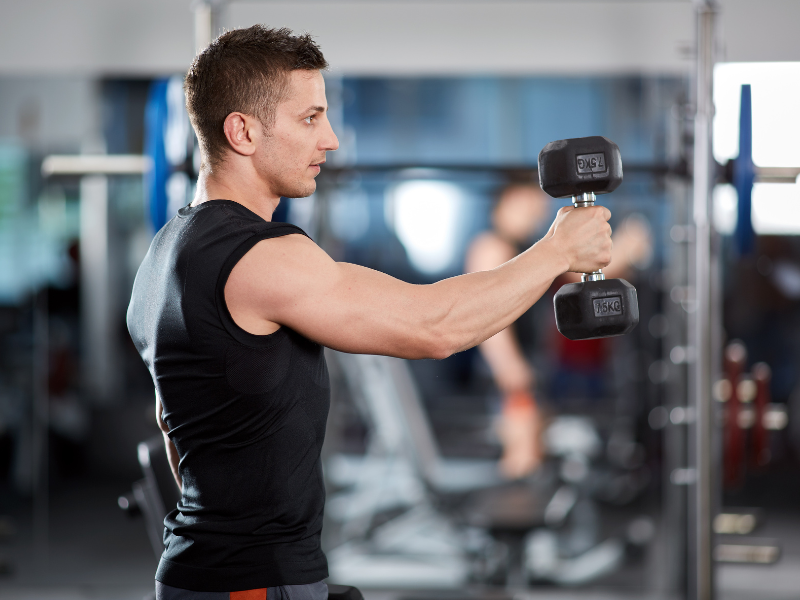
- Better Shoulder Stability & Strength: Strong front delts help stabilize the shoulder joint, reducing the risk of injuries and supporting proper movement mechanics [6].
- Improved Athletic Performance: The front deltoids play a key role in pushing, lifting, and throwing, boosting overall upper body performance.
- A Sculpted, Three-Dimensional Physique: Well-developed front delts contribute to the “V-taper” look, enhancing the overall symmetry of your shoulders and chest.
- Enhanced Compound Lift Performance: Strong delts improve your form and mechanics in exercises like bench presses, pull-ups, and lat pulldowns, making them more efficient [7].
- Balanced Muscular Development: Targeting the front delts helps create a proportional, well-rounded shoulder, minimizing the risk of imbalances and promoting better posture.
- Better Posture: Strong front delts support proper alignment, helping to avoid common issues like rounded shoulders and forward head posture.
- Improved Daily Movements: Whether reaching or lifting, well-developed delts make everyday activities smoother and more comfortable.
These benefits show that front delt training isn’t just about aesthetics—it’s crucial for overall function, injury prevention, and performance. Of course, you need to stretch your muscles properly and focus on having the correct form for these benefits to be fully felt.
Top 8 Best Front Delt Exercises
Before diving into these exercises, ensure you understand the correct starting position for each movement to maintain proper form and control. These exercises are effective for developing the anterior deltoids, combining both compound and isolation movements:
Overhead Press
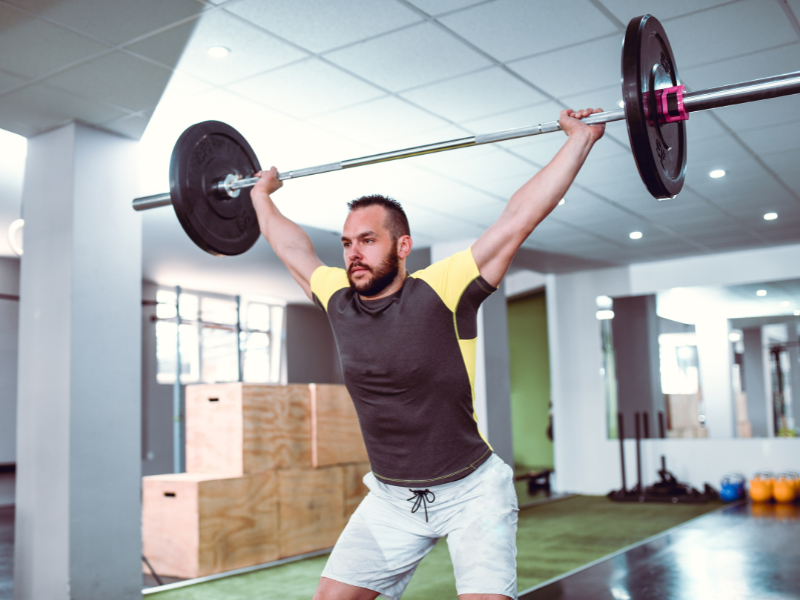
The overhead press is a staple for building overall shoulder strength, hitting all three deltoid heads. Want to lift heavier? Try the push press, which incorporates some leg drive to help you power through heavier loads. Keep the elbows slightly in front of the body as you press overhead to emphasize the front delts more. Avoid letting your elbows flare out too wide, as this could activate the lateral delts more than you want.
Incline Bench Press
While primarily a chest exercise, the incline bench press significantly activates the front deltoids, especially when using an incline of approximately 30-45 degrees. The higher the incline, the more you feel the strain on your shoulders. Quick tip – keep your hands shoulder width apart with shoulder blades retracted and avoid arching your back too much to ensure the front delts are doing the work, and incline dumbbell press is also an option.
Close-Grip Bench Press
This variation shifts the emphasis from the pectoral muscles to the front deltoids and triceps, making it an effective exercise for those looking to target these areas together. Boost the front delt activation by pressing the bar straight up without letting your elbows flare too wide.
Dips

Dips are a powerful compound movement, hitting the chest, triceps, and front delts all at once. To target the front delts more, lean your torso forward slightly as you dip down. This slight forward lean shifts more of the workload onto the chest and front delts, making it a great move for building a balanced upper body.
Landmine Press
This exercise uses a unique angle to target the anterior deltoids and can be easier on the shoulder joints than traditional presses. It allows for a natural range of motion and effective loading of the front delts. Keep the press at a slight angle in front of you (as opposed to directly overhead) to keep the tension on the front delts throughout the movement and use the kneeling split stance to best isolate the shoulder muscles [8]
Upright Rows
A great compound exercise that activates all three deltoid heads, but you can tweak it to really hit the front delts. Use a wide grip to reduce stress on your shoulder joints, and pull the weight up to chin level—this will emphasize the front delts over the lateral delts. The higher you pull the weight, the more it engages your front delts, so focus on that controlled lift for maximum activation.
Cable Front Raise
The cable front raise is an excellent isolation movement for targeting the anterior deltoids, utilizing the continuous tension from the cable machine. This exercise is especially beneficial to supplement more intensive exercises, focusing more on strength and function [9].
Pike Push-Ups
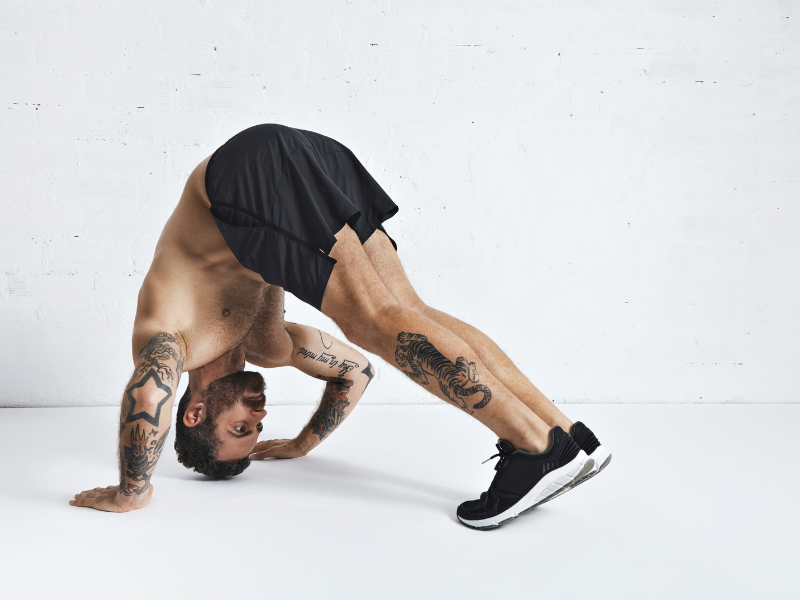
A killer bodyweight exercise for developing shoulder strength, especially the front delts. In this move, your hips are elevated, and your body is angled in a way that forces your shoulders to do most of the work.
When combined effectively, this range of workouts offers a well-rounded approach to front delt development.
Check out shoulder workout routines:
A good example would be variations like the close-grip bench press or an overhead press with your elbows slightly forward. Slow, controlled movements are essential to ensuring proper muscle activation and avoiding the use of momentum, which can reduce the effectiveness of the exercise. Keep tension on the front delts throughout the entire movement to see more muscle engagement and growth!

Tips for Incorporating Front Delt Exercises into Your Routine
Below are some tips to keep in mind before diving into front delt isolation exercises and more.

- Rep Ranges and Load:
For building strength, focus on lifting heavier weights with fewer reps for shoulder training—typically in the 3-5 range. On the other hand, if your goal is muscle growth, use moderate to lighter weights with higher reps (around 8-12). The key is to choose a weight that challenges you by the end of each set, bringing your muscles close to failure to ensure you’re optimizing strength or hypertrophic gains [10]. - Volume and Frequency:
If you’re a beginner or intermediate lifter, aim for about 10-12 sets per week for your front delts, spread out over 2-3 sessions [11]. Advanced lifters, however, may need a higher volume to keep pushing muscle growth. Aim to train the front delts twice a week, making sure to allow adequate time between sessions for recovery. - Vary Your Exercises:
To keep progressing, incorporate both isolation and compound exercises targetting the front delts, using different equipment and angles. Not only does this promote more complete muscle development, but it also prevents plateaus and keeps your workouts fresh and challenging!
Common Mistakes to Avoid When Training Front Delts
Avoiding these common pitfalls will enhance training effectiveness and reduce the risk of injury:
- Overtraining is a common mistake, as the front deltoids are frequently involved in other exercises, particularly when following training splits that combine chest and shoulder days. Adequate rest and recovery between sessions are essential to prevent overtraining and ensure muscle growth.
- Poor form, such as using momentum to swing weights, reduces muscle activation and effectiveness and can also increase the risk of injury. Proper form, with slow, controlled movements, should always be prioritized over lifting heavier weights. Focus on maintaining constant tension in the targeted muscles to maximize benefits.
- Ignoring Muscle Imbalances: Overdeveloping the front deltoids can lead to muscle imbalances. A well-rounded shoulder routine should equally emphasize the lateral and posterior deltoids by incorporating more compound exercises to avoid this.
You may also like:
Should You Workout When Sore? Everything You Need To Know About It
What To Eat Before A Workout: A Useful Guide For Morning Workouts
Conclusion
The front delts are pivotal in your journey to stronger, chiseled shoulders. By understanding their function and incorporating the right exercises—both compound and isolation movements—you can unlock the full potential of your upper body and reap the full benefits. Whether you’re focusing on overhead presses, front raises, or dips, consistency, and proper technique are necessities. It’s not just about lifting heavier weights, but also about smart training, progressive overload, and allowing your muscles time to recover. With the right approach, you’ll develop a powerful and sculpted physique, and for access to more such exercises and workouts, you can check out the JustFit app!
What is the single best exercise for the front delts?
How do I specifically target the front of the shoulders?
How many front delt exercises should I do in a workout?
How do compound exercises help in shoulder workouts?
ulking vs. cutting: What’s the difference? Nike.com. (2022, July 26). Available at: https://www.nike.com/sg/a/bulking-vs-cutting-benefits
Bernárdez-Vázquez, R., Raya-González, J., Castillo, D., & Beato, M. (2022, June 14). Resistance training variables for optimization of Muscle Hypertrophy: An Umbrella Review. Frontiers. Available at: https://www.frontiersin.org/journals/sports-and-active-living/articles/10.3389/fspor.2022.949021/full
Campos, Y. A. C., Vianna, J. M., Guimarães, M. P., Oliveira, J. L. D., Hernández-Mosqueira, C., da Silva, S. F., & Marchetti, P. H. (2020). Different Shoulder Exercises Affect the Activation of Deltoid Portions in Resistance-Trained Individuals. Journal of human kinetics, 75, 5–14. Available at: https://doi.org/10.2478/hukin-2020-0033
Chang LR, Anand P, Varacallo MA. Anatomy, Shoulder and Upper Limb, Glenohumeral Joint. [Updated 2023 Aug 8]. In: StatPearls [Internet]. Treasure Island (FL): StatPearls Publishing; 2025 Jan-. Available from: Available at: https://www.ncbi.nlm.nih.gov/books/NBK537018/
Deltoid. Physiopedia. (n.d.). Available at: https://www.physio-pedia.com/Deltoid
Landmine Shoulder Press. Human Kinetics. (n.d.). Available at: https://us.humankinetics.com/blogs/excerpt/landmine-shoulder-press?srsltid=AfmBOoqFxb0NTxnuNyp6d0fC_KnWawPvBXPoZReXl5bicLCylvKUd661
Luna, D. (2023, May 23). Cable front raise: Benefits, muscles worked, and more. Inspire US. Available at: https://www.inspireusafoundation.org/cable-front-raise/
Schoenfeld, B. J., Grgic, J., Van Every, D. W., & Plotkin, D. L. (2021). Loading Recommendations for Muscle Strength, Hypertrophy, and Local Endurance: A Re-Examination of the Repetition Continuum. Sports (Basel, Switzerland), 9(2), 32. Available at: https://doi.org/10.3390/sports9020032
Top 5 exercises to build big shoulders. Surrey Physio. (n.d.). Available at: https://www.surreyphysio.co.uk/top-5/top-5-exercises-to-build-big-shoulders/#:~:text=Working%20across%20different%20planes%2C%20with,presses%2C%20and%20supine%20lateral%20raises.





